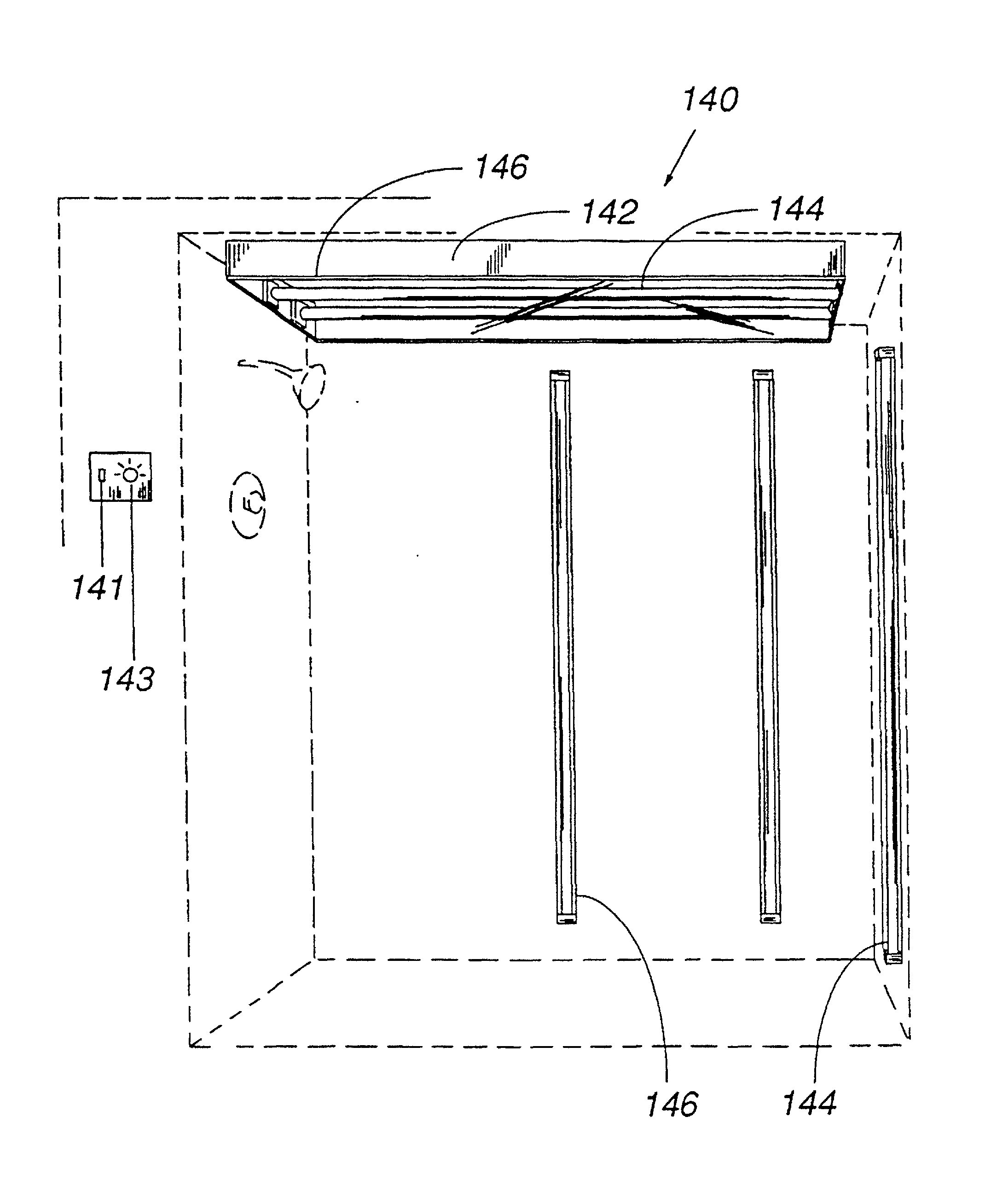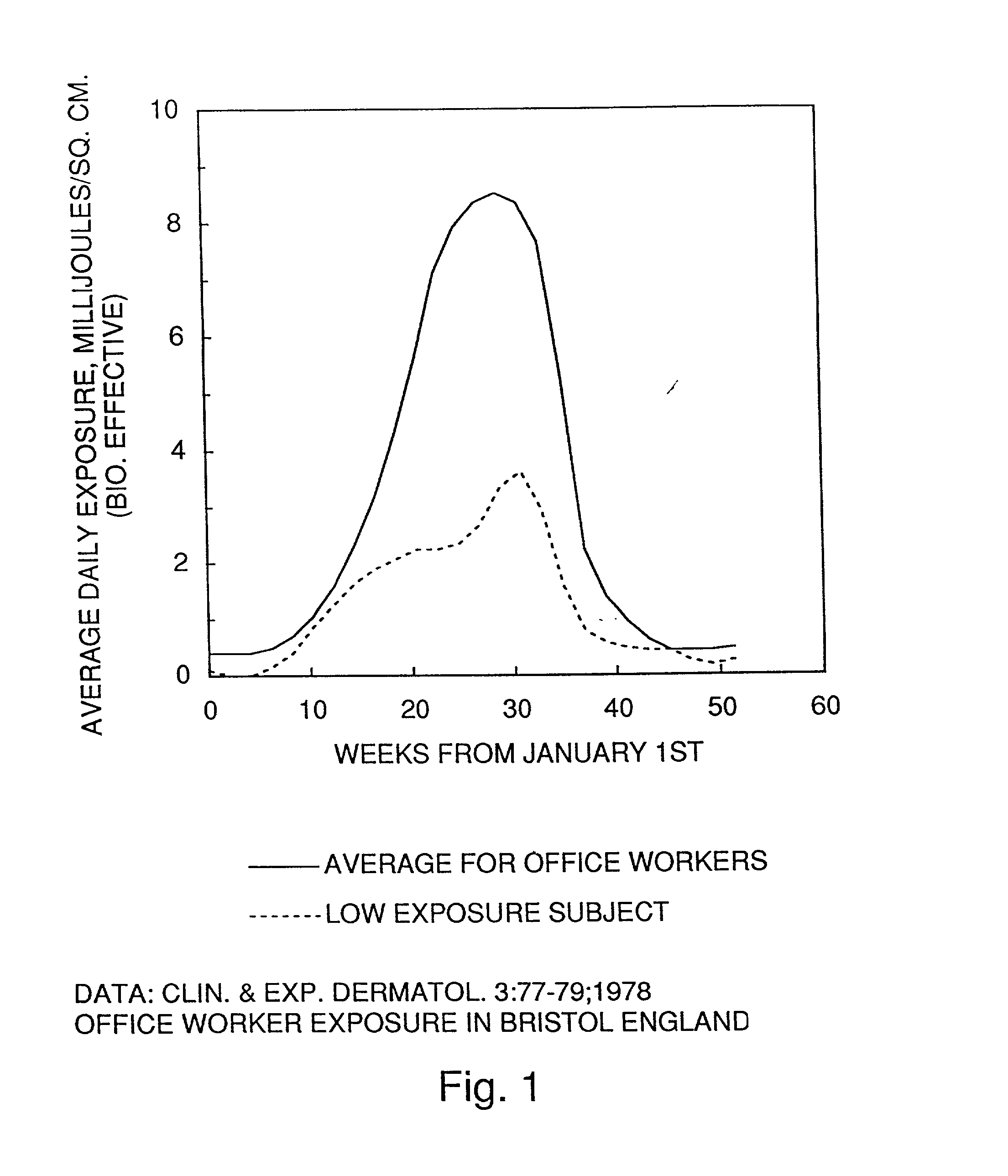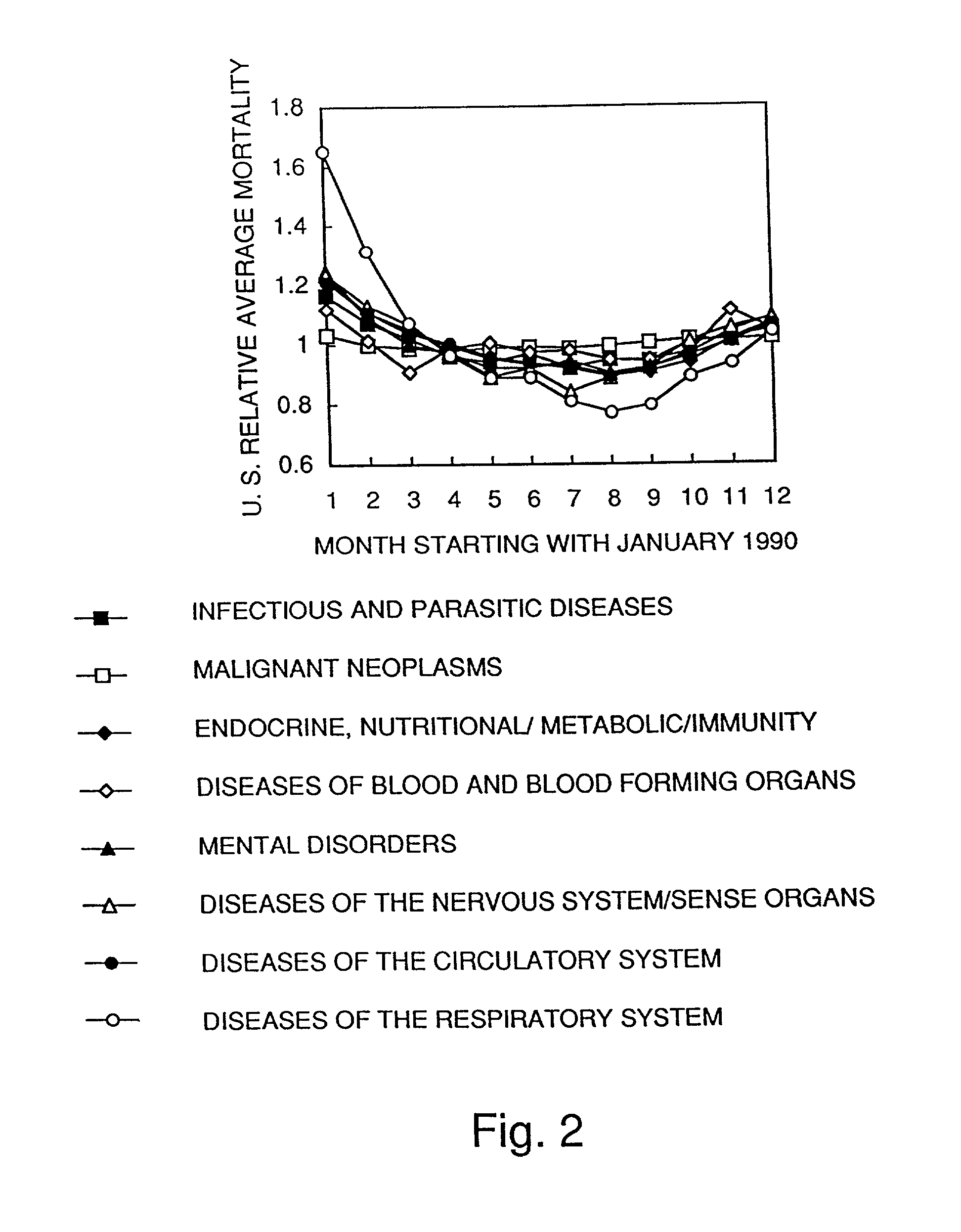Skin light exposure control methods
a skin light and exposure control technology, applied in the field of skin light exposure control methods, can solve the problems of increasing the incidence of the often fatal skin melanoma, the difficulty of reducing the incidence of skin melanoma, so as to stimulate the elimination of a natural metabolite, moderate or eliminate depression, and improve skin illumination
- Summary
- Abstract
- Description
- Claims
- Application Information
AI Technical Summary
Benefits of technology
Problems solved by technology
Method used
Image
Examples
Embodiment Construction
[0193] The above and other objects and advantages and novel features of the present invention will become apparent from the following detailed description of the preferred embodiment of the invention illustrated in the accompanied drawings, wherein:
[0194] Adjustable Ultraviolet Transmission Window
[0195] FIG. 6 is an adjustable window, 11, of know construction which is currently available. The sections are positioned for intermediate ultraviolet transmission;
[0196] Referring now to the sectional view in FIG. 7, the outer frame, 12, along with the side supports, 13, are used to support the movable windows 19, 22, and 18. The ultraviolet transmitting window is the outer window, 19. The windows in the middle, 22, and inner, 18, units block the ultraviolet UV-B (280 - 315 nm) radiation.
[0197] A window insert, 24, is held by a grommet, 27. The window is guided along the track by the guide, 26. The retractable pins, 34, enable the window to be positioned manually using the handles, 31. The...
PUM
 Login to View More
Login to View More Abstract
Description
Claims
Application Information
 Login to View More
Login to View More - R&D
- Intellectual Property
- Life Sciences
- Materials
- Tech Scout
- Unparalleled Data Quality
- Higher Quality Content
- 60% Fewer Hallucinations
Browse by: Latest US Patents, China's latest patents, Technical Efficacy Thesaurus, Application Domain, Technology Topic, Popular Technical Reports.
© 2025 PatSnap. All rights reserved.Legal|Privacy policy|Modern Slavery Act Transparency Statement|Sitemap|About US| Contact US: help@patsnap.com



